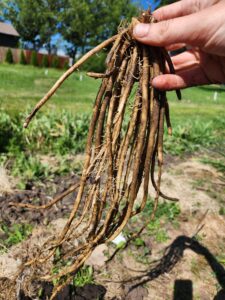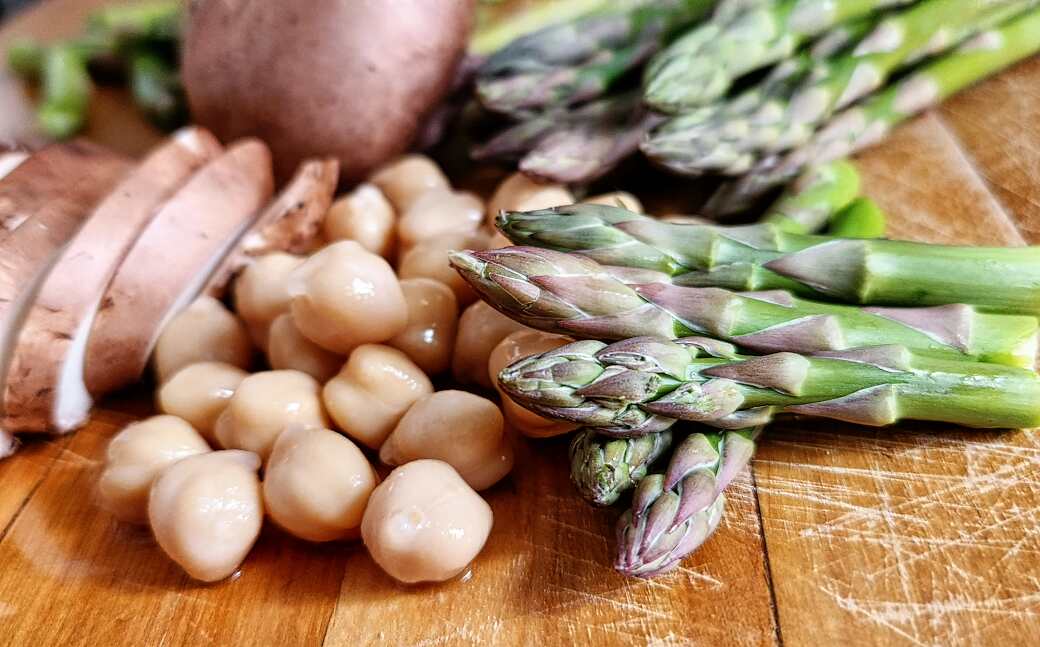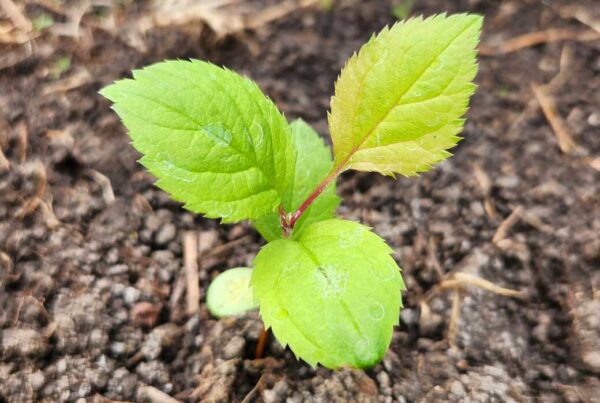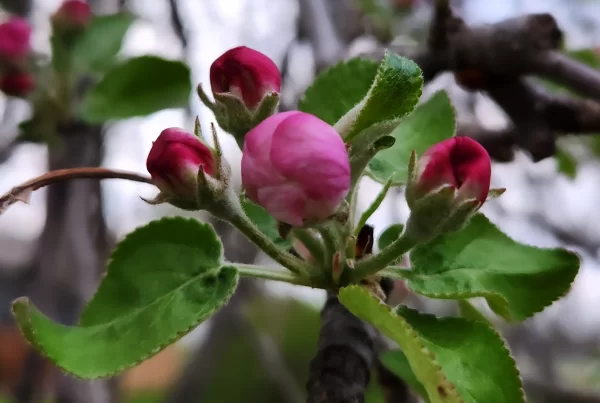Thank you for supporting our small family farm! This post will detail how to grow your new Purple Passion asparagus plants. Purple Passion is sweeter than green asparagus, and remains tender, even with large stalks. It will turn mostly green when cooked, but is delicious raw and makes a great addition to fresh vegetable trays! Purple Passion asparagus freezes well, so it can be enjoyed over an extended season. Asparagus is a low maintenance perennial that grows well in USDA zones 3-8.

Your new asparagus plants are currently growing in special pots called Treepots, our favorite planters for trees and plants with large root systems. Although your asparagus will continue to grow in these for the next few months, we recommending planting them in the ground shortly after purchase for optimal root development. Asparagus will bear for twenty years or more with proper care, so choose a planting site accordingly.
Planting Purple Passion Asparagus
Purple Passion asparagus prefers full sun, but can tolerate partial shade. It does not like locations with standing water, as this can cause its roots to rot. Plant your asparagus in the spring or early summer, after the threat of frost has passed. Dig holes six inches deep and lightly cover the crown with soil. Plant Purple Passion plants 6-8″ apart; not that this is different than the 12″ spacing recommended for green asparagus verities. During your plants’ first year in your garden, weed regularly. Weeds will reduce yields and root development of young plants.

Watering
Asparagus roots require frequent watering during the first and second years. As roots deepen over time, they will require less water. As noted above, do not overwater; asparagus plants do not tolerate long periods of standing water.
Fertilizing
Fertilizing asparagus is recommended once per spring and fall. I recommend using homemade compost or compost tea in your asparagus bed.
Overwintering
Purple Passion asparagus is hardy to zone 3, so it does not require winter protection in NW Iowa (zones 4 or 5). However, some gardeners recommend covering it with a thin layer of mulch in the fall. In the spring, I recommend cutting down any remaining fern-like foliage before new asparagus shoots appear, as they may hold pest eggs.

Some of your asparagus may be female (yes, asparagus plants have a gender), and can produce red asparagus berries in the fall (see above photo). No, they are not edible. However, they will contain seeds that you can plant next spring, should you wish to do so.
Harvesting Asparagus
Do not harvest your asparagus for two years. Your newly established plants need to spend their energy on growing deep roots. In year three, you can harvest asparagus by snapping spears off at ground level, or cutting them with a sharp knife.
Please feel free to reach out with any questions you may have about growing asparagus; we’re always happy to talk about plants!
Want a fun way to weed your garden this summer? Check out our post on flame weeders!










